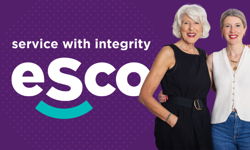
For Freelancer Magazine, it wasn’t the case of building a community around a publication – the idea for the magazine was born from being an active part of freelance communities and spotting the gap in the market. The magazine only exists because of the incredible support of those freelance communities and we, in turn, exist first and foremost to help them. That is our number one priority and it drives all our content and business decisions.
We launched the magazine via the Kickstarter crowdfunding platform to validate a product / market fit before we created it. This was also the best way we could have made people feel involved as early as possible. We asked people to choose our branding and hosted two parties live-streamed on Twitch. This allowed us to start building our email database which has a 60-70% open rate.
Our second issue was themed Community so who better to put on the cover than our own community. We asked people to submit their images (that email got an 80% open rate) and we received over 100 in a few days.
Our readers sharing pictures of the magazine when they receive it across their social media is the main way we grow our subscriber numbers and of course, having over 100 cover stars for Issue Two only helped encourage that. We are always looking to give the magazine talkability value – to create community conversation starters. It has its own playlist, pet pages and Issue Three had a die-cut hole in the front cover.
Social media is essential for us for connecting and communicating with the community. We use LinkedIn, Twitter, Instagram and Facebook. We share helpful content, run competitions, give shout outs and ask questions. Having a direct relationship with readers helps grow the community. Practically speaking, this comes from selling 99% of the magazines through our own website, regularly asking readers to contribute and make suggestions and including the editor’s email address and our social media handles in the magazine.
One thing that businesses tend to get wrong in terms of growing a community is thinking that they own it. You don’t own a community, you are part of it. It’s not a community if you have a one-way dialogue with them or even a two-way dialogue – that’s an audience. To be part of a community, you need to facilitate the linking of people within it to each other. All of our articles have a social media handle at the end so that readers can follow and connect with one another. We want to give people the sense of being part of a club and the excitement of receiving a print magazine through the door certainly adds to that.
One thing that businesses tend to get wrong in terms of growing a community is thinking that they own it.
This article is part of our ‘Building Successful Communities’ special feature, looking at how publishers go about creating engaged and vibrant communities. The feature includes the following articles by publishers and suppliers:
Build engagement on your platform, by Sally Arnold
The money is in the conversation, by Lucy Brazier
Create spaces online to share opinions, by Gary Clement
Community first, magazine second, by Sophie Cross
Publishers are taking community seriously, by Ashley Friedlein
Find the right voice, by Esther Newman
Audience engagement is top priority, by Charles Thiede
Build connections & be interested, by Ed Walker
This article was first published in InPublishing magazine. If you would like to be added to the free mailing list, please register here.












